The Sets and Costumes of Beautiful Decay
by Brook Manning
For Beautiful Decay’s set design, Mr. Fonte chose to work with Mimi Lien, a New York-based designer of sets and environments for theater, dance, and opera. Approaching set design from a background in architecture, Ms. Lien is known for her inventive interpretations, creating signature pieces that heighten the theatrical experience for both performer and audience.
Her work has appeared on national and international stages and her efforts have been rewarded with many honors including an OBIE Award for sustained excellence, a 2015 MacArthur Fellowship and the title of resident designer for Ballet Tech in New York. She has worked with OBT in the past as Set Designer for Christopher Stowell’s Carmen and for Mr. Fonte’s unforgettable version of Petrouchka.
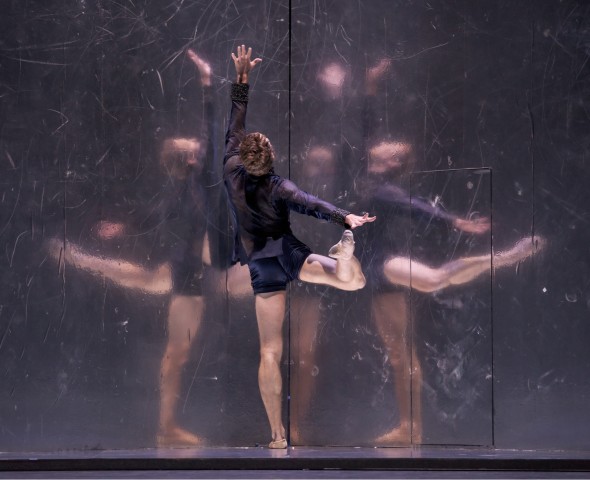
Petrouchka (Brian Simcoe) explores the boundaries of his mirrored room in Stravinsky’s Petrouchka, presented by Oregon Ballet Theatre in 2011. World premiere choreography by Nicolo Fonte. Photo by Blaine Truitt Covert.
For Beautiful Decay, her geometric set design includes a row of archways that divide the stage space into a series of rooms that the dancers pass through on their journey. The finished product is seen below at the ballet’s premiere with BalletX in Philadelphia in 2013:
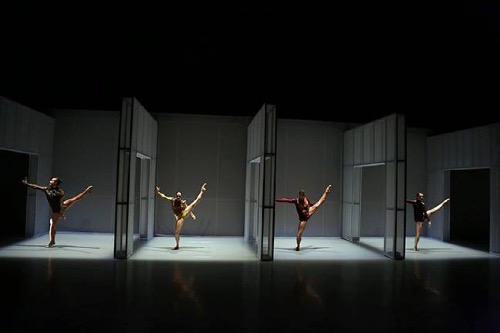
Photo from drewbilliau.com
When asked about their process, Mr. Fonte replies, “Mimi’s the best. She’s incredible. She and I have an interesting way of working. We go through all sorts of ideas. What about this, what about that? And then she’ll hear one thing that I say and she’ll go with it 2000%. So when I said, ‘In Act 1 the dancers are only going to move in one direction, from stage left to stage right.’, she said, ‘Alright. That’s like Versailles. You’re in a palace and you open the door and you look through a hundred rooms all lined up.’ That was how she came up with the idea of the rooms. And I thought how perfect it was. Not only that she mentioned Versailles, because the music is The Four Seasons and it’s baroque, but there are also baroque references in the costumes.”
In choosing material for the archways, Mr. Fonte and Ms. Lien agreed that, since one of the first signs of age is deterioration of the skin, they wanted a material that referenced skin. To this end, Ms. Lien chose a voile fabric in ecru. Seventeen-foot long rolls have been rolled out in OBT’s studios and cut to size. These pieces are being applied to the set’s steel frames, but the semi-sheer fabric allows the structure to remain seen underneath, as one can see bones or veins under human skin.
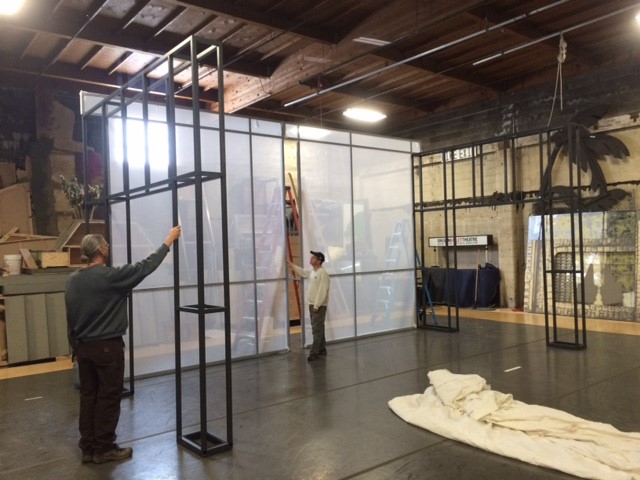
Photo by Bill Anderson
Two of the archways retract upstage, changing the stage space from four rooms to two in the middle of the first act. This change happens very subtly as stagehands roll the wheeled archways out of sight when the stage is more dimly lit to hide the transformation. Mr. Fonte said this choice was made for two reasons. With the first act running approximately 45 minutes, he and Ms. Lien decided there needed to be some kind of a modification to the visual environment. The walls recessing also gave Mr. Fonte more space for his dancers to move, which became necessary with the first act packed with movement as dense and complex as baroque architecture.
The horizontal movement that evoked time’s continuum in Act 1 is now dispersed in all directions of the stage in the much more ephemeral Act 2. In order to allow for this, and to create an environment for the dancers who now move in a more measured way, (more at the pace of Tai Chi than the feeling of racing through life), another arch is removed, leaving only a single, small room on stage right, with a much larger space on stage left in which to explore new movement motifs.
Both dancers and stage crew are having to learn to navigate the changing scenery, and are getting in some practice before the set even reaches the stage. This week the company dancers and stage crew are participating in rehearsals at OBT’s warehouse where the set has been constructed. They will be blocking the performance (setting the choreography within the confines of the set space) so that their spacing will be clear before they begin rehearsals onstage at the Newmark Theatre. (Click here for a rehearsal video.)
As Mr. Fonte will tell you, no element of this production is arbitrary. This goes for Martha Chamberlain’s costume designs for the ballet as well. Ms. Chamberlain comes to costume design with a dancer’s eye, having performed with Pennsylvania Ballet for 21 years and risen to the rank of principal dancer within that company.
As noted, Act 1 of Beautiful Decay has baroque influences, from the choreography to the music to the set design. Ms. Chamberlain’s costumes also include baroque references in both the color scheme and the design. Her color palette includes the deep, rich reds, greens and ochres found in the paintings of Caravaggio and Rembrandt.
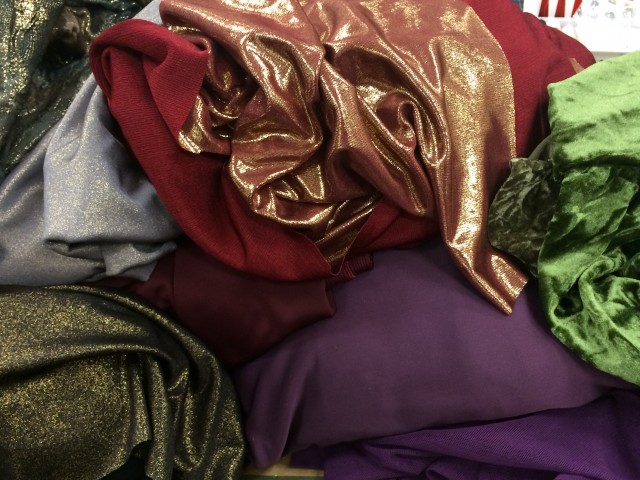
Photo by Natasha Kautsky
The company women’s tops allude to baroque fashion with a v-shaped front and small cap sleeves incorporated into their design.
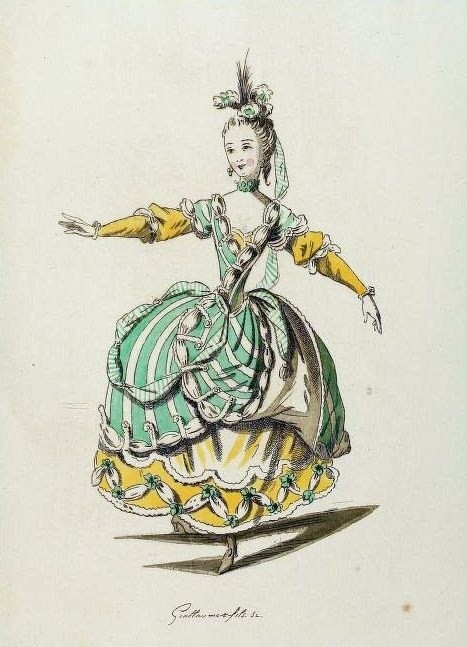
Illustration from nybaroquedance.org
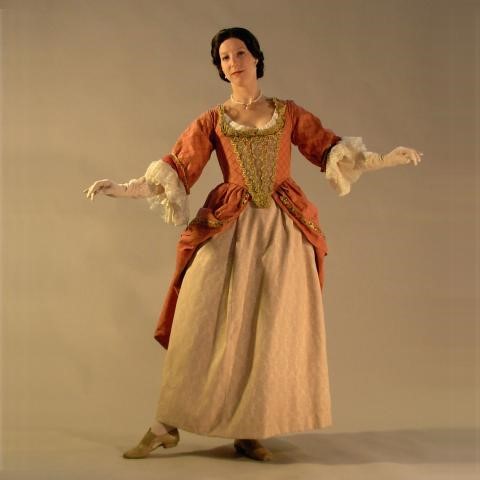
Photo from creativeground.org
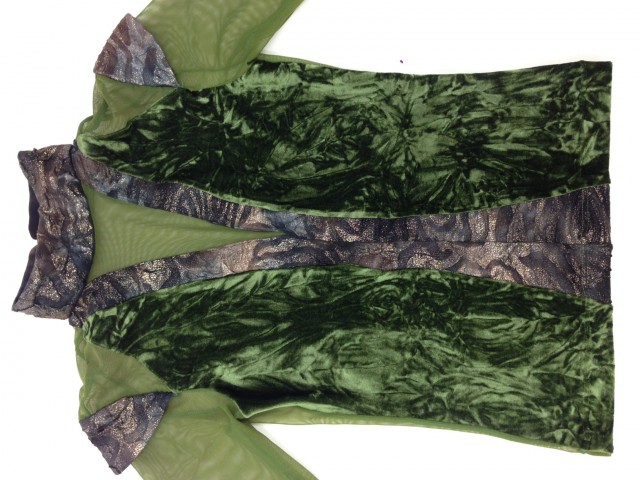
Photo by Brook Manning
Throughout the ballet, Guest Artists Susan Banyas and Gregg Bielemeier, the work’s senior dancers, remain in a silk dress and black suit with white t-shirt respectively. In the second act, when the archways have been taken away and the dance has shifted its focus to the here-and-now (as if we have time-traveled 400 years to the present), the costumes become contemporary.
The men are now dressed in the same black suit and white shirt that Mr. Bielemeier has worn throughout and the women are now in a faded version of the same dress Ms. Banyas wears. Mr. Fonte says, “The similarities of the costumes emphasize the idea that we are all one. We are them; they are us. Then they literally strip down to the basic black and white shorts and t-shirt as a reference to the fact that the dancers are revealing their true selves.”
The ballet contains poignant moments of revelation, memory and community. As Mr. Fonte says, “It’s a piece about inter-generations and celebrating both. Really celebrating both.” Come and experience Beautiful Decay at the Newmark Theatre, April 14th – 23rd.